#ribbed pine borer
Photo

Ribbed Pine Borer Larva, a digital painting experiment.
#beetle larva#beetle larvae#coleoptera#insect art#digital art practice#digital illustration#natural science illustration#ribbed pine borer#larvae#larva#grubs#insects#nature art#grub#bug art#bugs
640 notes
·
View notes
Note
Top 5 bugs!
Tough one!! But ok let's see (there'll be more than 5 because I'm fucked up with bugs ok).
Weevils
Just.. I'm sorry I couldn't NOT put the whole family in my favourites. They're just so cute, the best bugs out there ok. And very diverse at that. I do have a few specific buddies in mind though, like:
Philopedon plagiatus (pl. sieciech niegłębek). Just a tiny ball. A tiny guy. A pin's head buddy. Rolling around eating my butterfly bush leaves.

Nut weevil. Look at this alien.
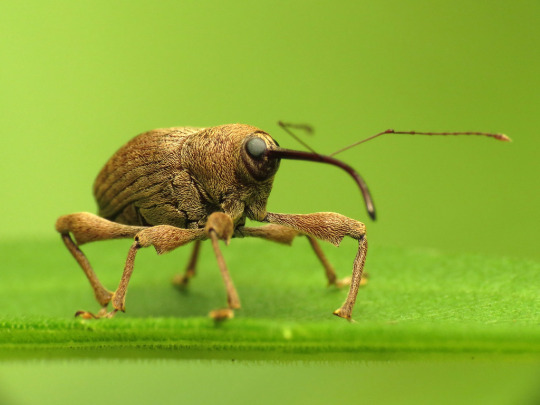
Ribbed pine borer
I just love the eyeliner and their shape.
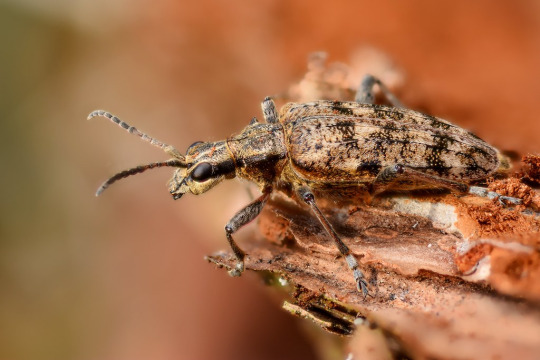
Sphinx moths
Again a whole family, but they're so special. I raised a small elephant and pine hawk-moths myself a few years back. Beautiful creatures and the caterpillars are so interesting too.
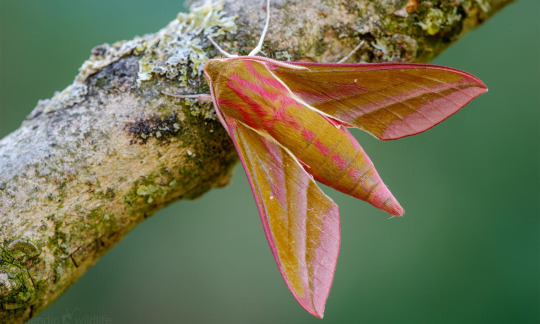
Nun moth
I know I KNOW they're one of the biggest pests in our forests but their patterns are so wonderful I got a tattoo of one of them ok? It's for the aesthetic.

Zygaenidae
But most importantly burnet moths:
Six-spot burnet
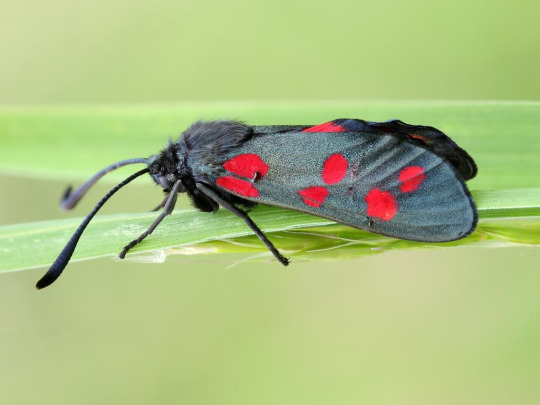
Yellow-belted burnet

And there are SO many more I personally find very cool, but this would be a very long post adsjajgb thanks for the ask though I'm always happy to spontaneously talk about bugs
3 notes
·
View notes
Photo
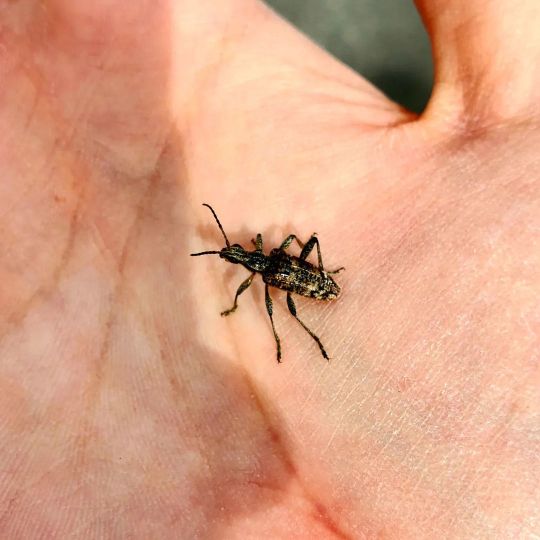
Taken the same day as the last post, I found this ribbed pine borer (Rhagium inquisitor), or barrträdlöpare, as a stowaway inside one of the busses I was leaving on. They occur throughout Sweden especially wherever Scot's pine and other pine species occur, though conifers and deciduous trees will also do. The adults are active from April to August, when mated females deposit eggs into bark crevices or empty galleries under bark. Once the larvae hatch, they feed under the bark creating galleries 1-2 cm wide filled with frass, shredded brown wood, and bark. They pupate within September to October before emerging in spring. #animal #animals #djur #wildlife #insect #insects #naturliv #natur #fauna #arthropod #arthropods #insekt #insekter #invertebrate #skalbaggar #långhorningar #beetle #beetles #longhornbeetle #invertebrates #insectagram #animalia #arthropoda #insecta #coleoptera #cerambycidae #rhagium #rhagiuminquisitor #barrträdlöpare #ribbedpineborer (at Bokenäs Skola) https://www.instagram.com/p/CfsxqIoudjj/?igshid=NGJjMDIxMWI=
#animal#animals#djur#wildlife#insect#insects#naturliv#natur#fauna#arthropod#arthropods#insekt#insekter#invertebrate#skalbaggar#långhorningar#beetle#beetles#longhornbeetle#invertebrates#insectagram#animalia#arthropoda#insecta#coleoptera#cerambycidae#rhagium#rhagiuminquisitor#barrträdlöpare#ribbedpineborer
0 notes
Text
@erraticartist submitted: Hello! Recently I went on a hike with the intent of taking photos of Cool Bugs (and plants, and animals if I was lucky) and not a minute after stepping out of my car, this friend landed on my head, then politely waited while I figured out my camera settings. A ribbed pine borer I think!
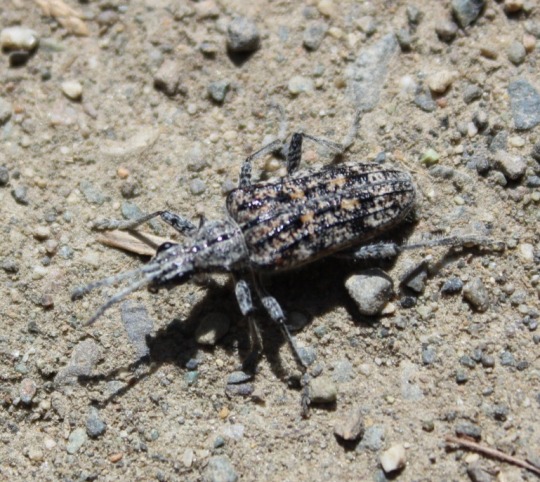
Then we walked through a field of dandelions, and we could hear All The Bees all around us. Here is one fine example, a good bumblebee I think:
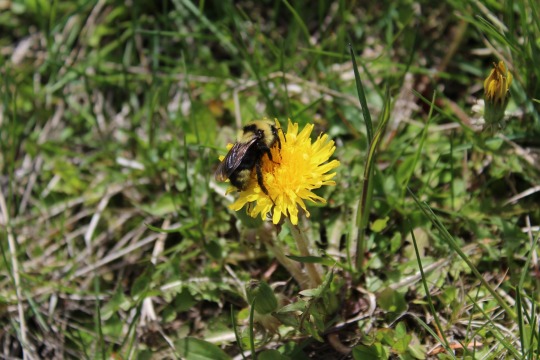
We also saw some water gliders in a slow spot in a creek, but it wasn't in a place I could safely reach to get a good photo.
Both seen just outside Kamloops, BC.
Bonus: this lovely toad friend from the same hike
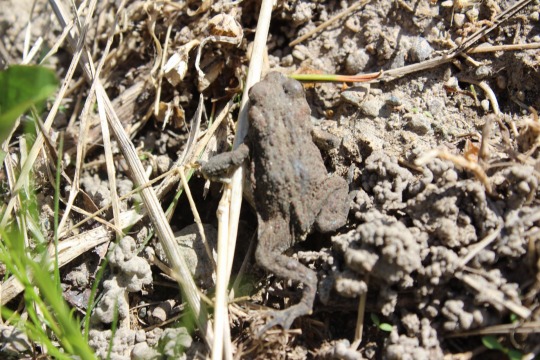
Hi! These are some fine friends. You're right, the first one is definitely a ribbed pine borer and the second a bumblebee. Look at that toad's little butt!!! Precious...
#animals#insects#bugs#toad#frog#pine borer#ribbed pine borer#bumblebee#bee#submission#beetle#longhorn beetle
61 notes
·
View notes
Text
“The Whirligig Beetles are wary and fast with an organ to detect the ripples. The Arachnid Moths lay their eggs inside other insects along the borders of fields or roads in clusters of white cocoons. The Ribbed Pine Borer is a longhorn beetle. Their antennas are half the length of their body and they feed on dead red pine. Robber Flies, with their immobile heads, inject a paralyzing fluid into their prey that they snatch from life in mid-air. The Snow Flea's mode of locomotion, strange and odd. With a spiny tail mechanism with hooks and a protracted tube from the abdomen to enable moisture absorption. The female Praying Mantis devours the male while they are mating. The male sometimes continues copulating even after the female has bitten off his head and part of his upper torso. Every night wasps bite into the stem of a plant, lock their mandibles into position, stretch out at right angles to the stem and, with legs dangling, they fall asleep. If one places a minute amount of liquor on a scorpion, it will instantly go mad and sting itself to death. The Bombardier Beetle, when disturbed, defends itself by emitting a series of explosions, sometimes setting off four or five reports in succession. The noises sound like miniature popgun blasts, and are accompanied by a cloud of reddish-coloured, vile-smelling fluid. It is commonly known that ants keep slaves. Certain species, the so-called Sanguinary Ants in particular, will raid the nests of other ant tribes and kill the queen and then kidnap many of the workers. The workers are brought back to the captor's hive where they are coerced into performing menial tasks. And as we discussed last semester, the Army Ants will leave nothing but your bones. Perhaps you've encountered some of these insects in your communities, displaying both their predatory and defense characteristics while imbedded within the walls of flesh and passing for what is most commonly recognized as human.”
— tom waits
60 notes
·
View notes
Photo
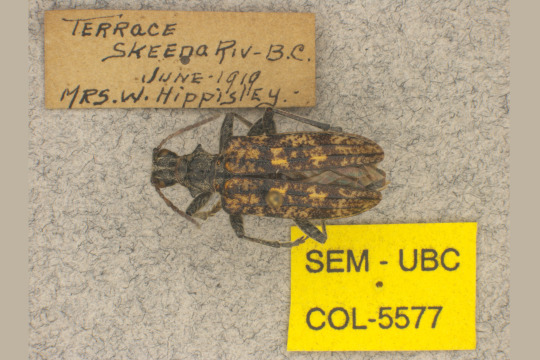
Ribbed pine borer; Rhagium inquisitor; 1910; Terrace, BC; Collected by Mrs. Hippisley
"Mrs. W.W. Hippisley was the first female to make a significant contribution to the entomological knowledge of British Columbia. She lived in Terrace, BC, and in 1922 published 'Notes on Northern British Columbia Coleoptera' in the Canadian Entomologist. Then, in 1948 and 1949 (as Mrs. M. E. Clark), she produced the most extensive BC species list up until that time, containing 420 species of beetles, in the Proceedings of the Entomological Society of British Columbia. Many of her specimens came to reside at the Spencer Entomological Museum in the 1950's."
Karen Needham, Assistant Curator of Entomology at the Beaty Biodiversity Museum.
0 notes